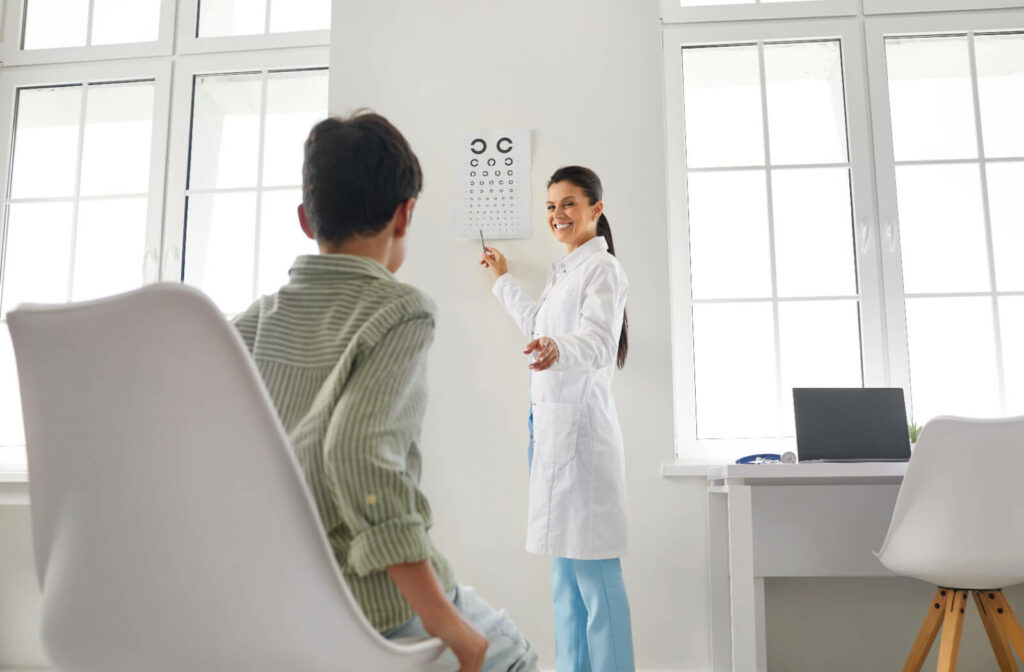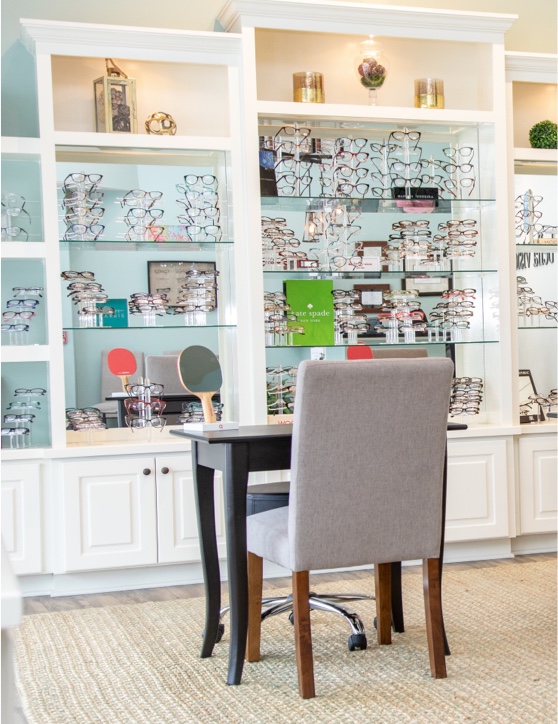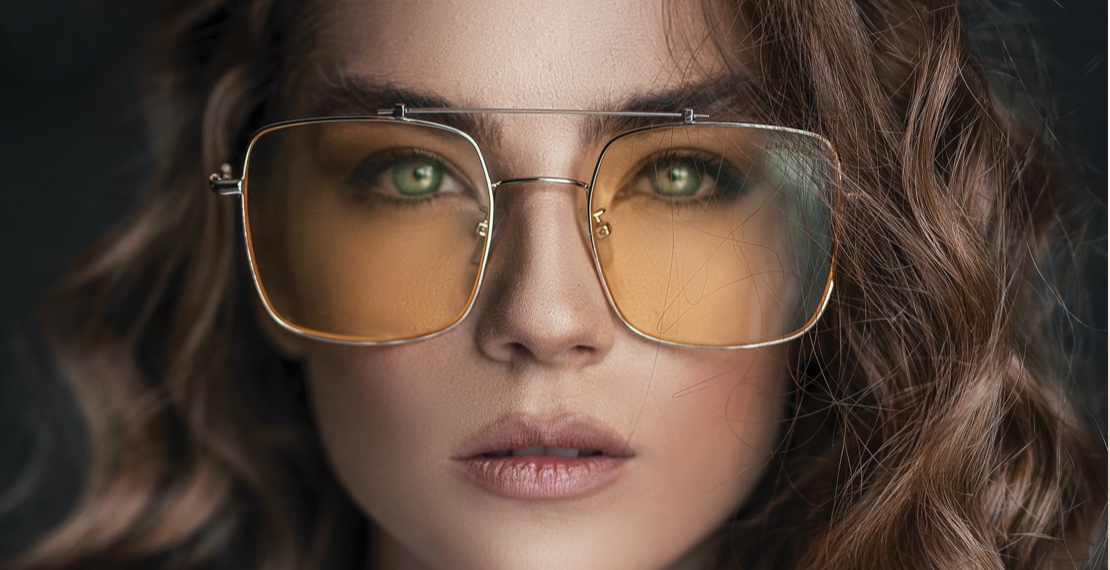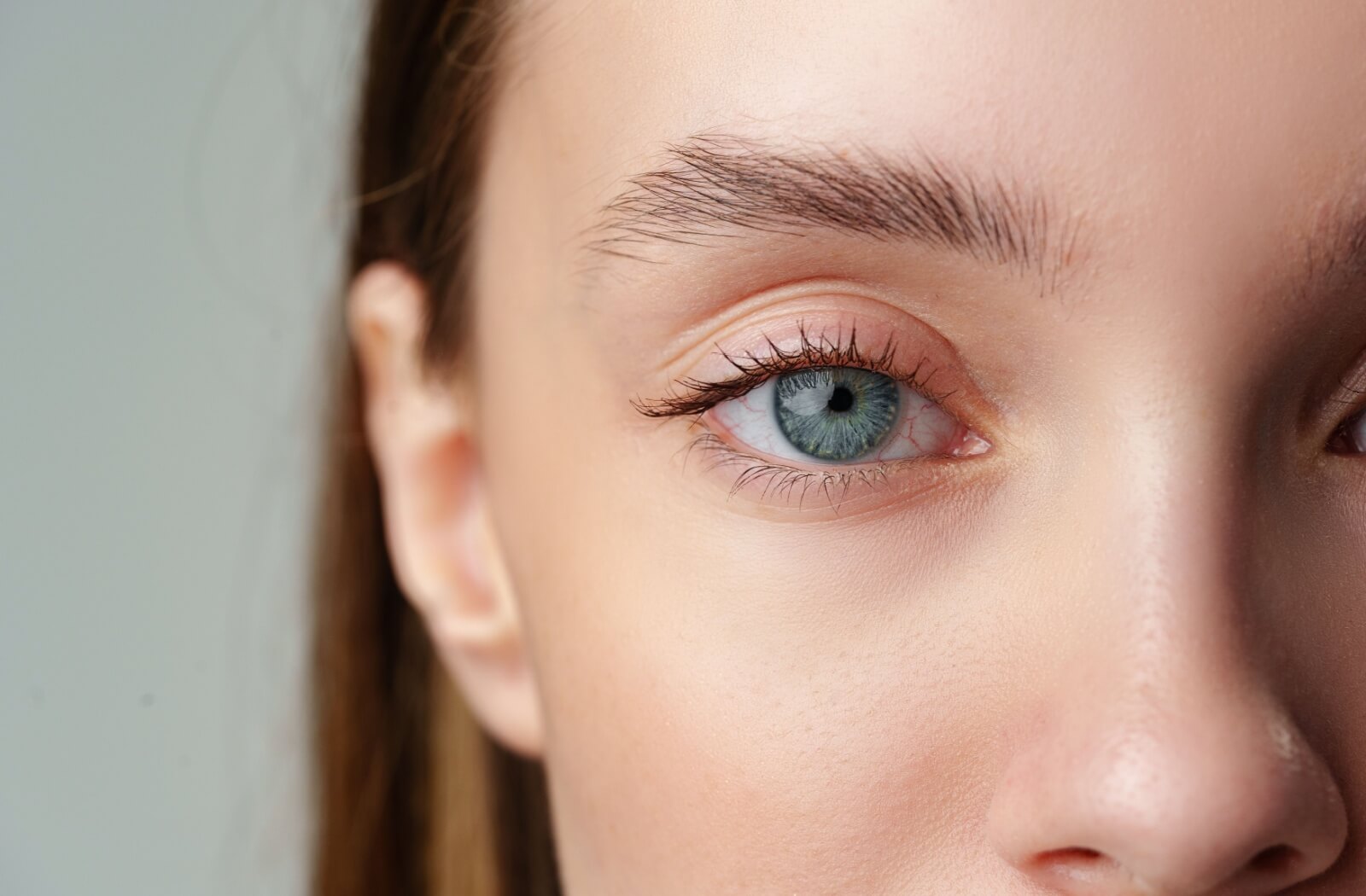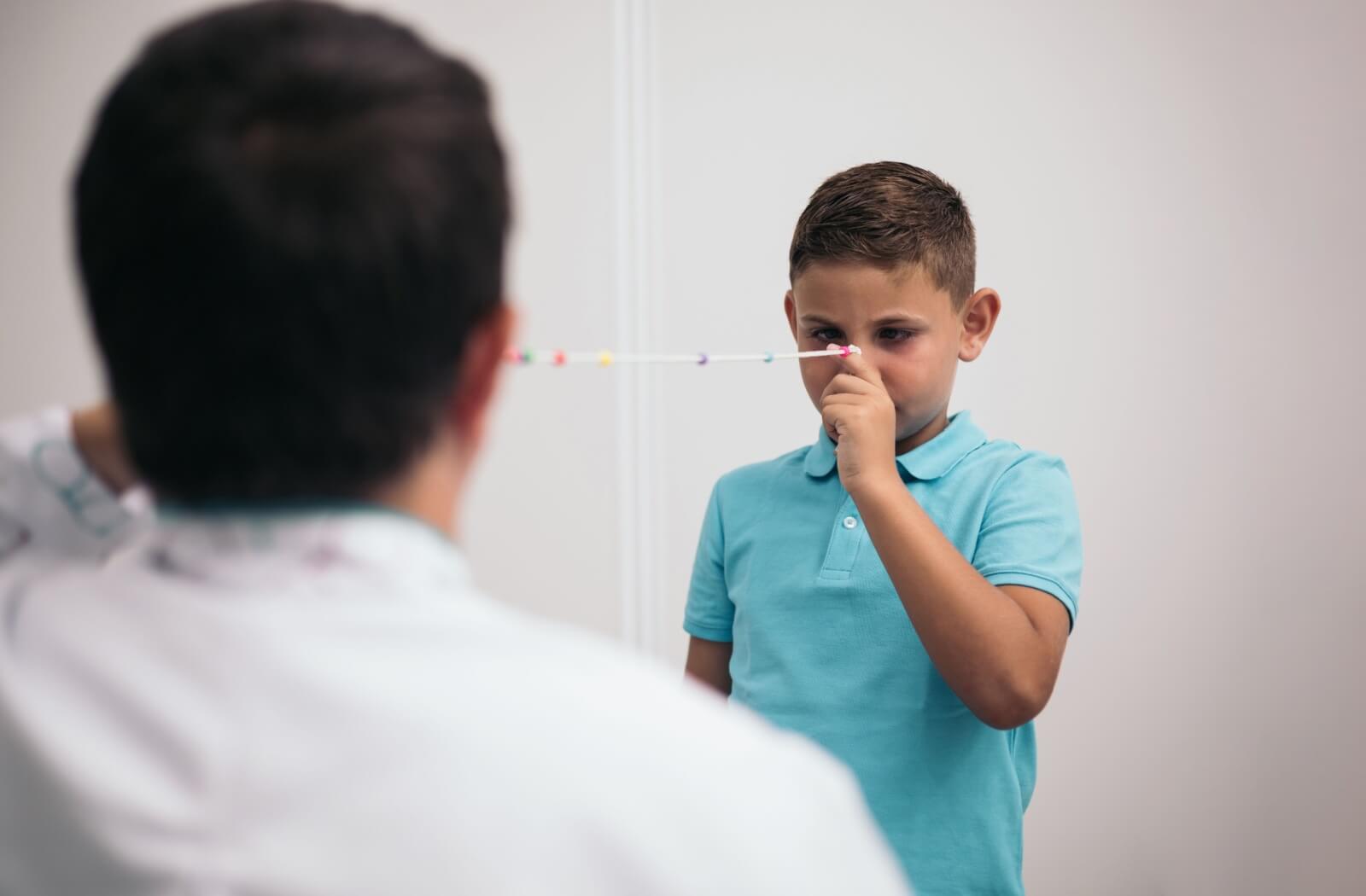If you’re reading this, it’s likely because your child has been diagnosed with an eye condition or has been struggling with a vision problem. It is normal to also struggle to understand how vision relates to the behaviors you are seeing at home or school. As a doctor who specializes in the functional aspect of vision, I see this daily in my clinic. When asked what vision is, many people answer, “it’s being able to see 20/20”. And while visual acuity is very important, there are other visual skills that are necessary in order to have clear, binocular vision.
As a parent, your child’s health and well-being are always a top priority, and when it comes to their eyesight, it can be especially worrisome.
Pediatric optometric vision therapy aims to improve the flow of visual information from eye to brain, emphasizing eye coordination (fusion/depth perception), eye tracking, focusing, and perception skills through a customized program consisting of various activities and techniques. Patients who have been diagnosed with amblyopia (lazy eye) or strabismus (eye turn) and benefits those struggling with learning difficulties or developmental delays can learn how to more efficiently process the world around them. This results in more confidence by your child that is not just seen in the classroom or on the sports field, but in real life, like when they are learning to drive.
What is Pediatric Vision Therapy?
Pediatric optometric vision therapy is a specialized form of vision care tailored specifically to your child’s visual needs. It involves activities and exercises designed to improve a child’s visual skills, such as eye coordination, visual perception, and eye movement control.
The in office optometric vision therapy is conducted through one-on-one sessions with a trained eye care professional. Progress evaluations by the doctor are performed intermittently during in office therapy as well. Prior to starting in office vision therapy, specific goals are outlined – from both the parent and the patient. They can vary from being able to read without double vision to being able to hit a baseball more accurately. Goals are important in order to ensure optimal outcomes. While we can’t promise that your child will ‘love to read’, we can help improve double vision or difficulties with eye tracking. The goal is to enhance a child’s visual abilities to better participate in everyday activities like reading, writing, and playing sports. Importance of Healthy Visual Skills in Children
I like to tell my patients that when vision is working well, it will enhance their life – it makes everyday tasks like reading directions or driving a car seem effortless. When vision is not operating as it should, it will “get in the way” of simple tasks, causing fatigue, frustration and a decrease in the quality of your life. Some common signs of poor visual skills in children include:
- Squinting
- Headaches
- Trouble focusing
- Having a short attention span
- Losing their place while reading
- Avoiding reading and other close-up activities
- Turning their head to the side
It’s easy to assume that when your child reads the eye chart at the pediatrician’s office that it is enough, but it isn’t. A comprehensive eye examination not only evaluates overall eye health which is imperative to clear, single vision, but we also assess eye alignment, stereopsis (3-D vision) and eye tracking. Keep in mind that children often don’t know to complain about vision problems since they assume that everyone sees the world as they do. Understanding the Development of Visual Skills in Children
As parents, we all want our children to have the best possible start in life, including giving them the tools they need to understand and navigate the world. One key area of development is their visual skills. Visual skills refer to a child’s ability to use their eyes to gather and process information about their environment.
Visual skills are critical to a child’s cognitive, emotional, and social growth, from recognizing faces and tracking moving objects to interpreting colors and shapes. By understanding the stages of visual development and providing appropriate stimulation and support, parents and caregivers can give children a strong foundation for learning and thriving.
Stages of Visual Development in Children
Vision is a sense that also follows certain developmental milestones. As your baby grows, so does your child’s visual system. In the first few weeks of life, an infant’s vision is limited to seeing objects just a few inches away. Their eyesight will gradually sharpen as they grow, and colors become more defined.
By age 3, most children will have developed near-normal sight and color vision.
Impact on Learning & Daily Activities
It’s important to recognize that vision problems can significantly impact a child’s academic, emotional and .and social growth
Common refractive vision problems that can be improved by spectacle or contact lens correction include: astigmatism, nearsightedness, farsightedness. These conditions can affect a child’s ability to see clearly, track lines of text while reading, and maintain focus on tasks for extended periods.
If left untreated, these issues can lead to developmental delays, learning difficulties, and even social isolation. Parents should prioritize regular eye exams in order to identify vision problems that may be missed during vision screenings at school or well checks. Techniques Used in Pediatric Vision Therapy
Many different activities and techniques are utilized throughout the vision therapy program and are selected based on each child’s individual needs. Some common examples include:
Eye Tracking Exercises
Eye tracking is an important visual skill that involves moving our eyes smoothly and accurately across a line of text or following objects moving in space. Children who struggle with eye tracking may lose their place while reading or have difficulty following along during classroom presentations.
These exercises involve following an object with your eyes as it moves in a specific pattern or direction. This can help strengthen eye coordination and improve tracking abilities.
Focus-Shifting Activities
Another critical aspect of vision therapy is strengthening eye-focusing abilities. This skill is necessary for maintaining clear and comfortable vision at different distances, such as when switching between looking at the board in class to reading a book up close. Children may experience eyestrain or headaches while completing schoolwork without proper eye-focusing skills.
Focus-shifting activities require the eyes to rapidly switch between focusing on faraway and close-up objects, helping to improve the strength and flexibility of the eye’s focusing muscles.
Visual Motor Integration Tasks
These tasks involve visual and motor skills, such as throwing or catching a ball while visually tracking its movements. They help to develop hand-eye coordination and improve depth perception.
Visual Perception Games
Visual perception is another visual skill that can be improved through vision therapy. This refers to our ability to interpret and understand what we see. For example, recognizing letters and words on a page or making sense of a complex diagram requires good visual perception skills.
Activities like scavenger hunts, puzzles, and memory games that require identifying and matching objects or shapes can improve visual perception skills.
Eye Relaxation Techniques
Just like any muscle in the body, the eyes can benefit from relaxation techniques. These may include simply taking breaks from screens.
Remember, these are just some examples of vision therapy techniques that may be used. Depending on an individual’s specific needs and diagnosis, other activities or customized programs may be used.
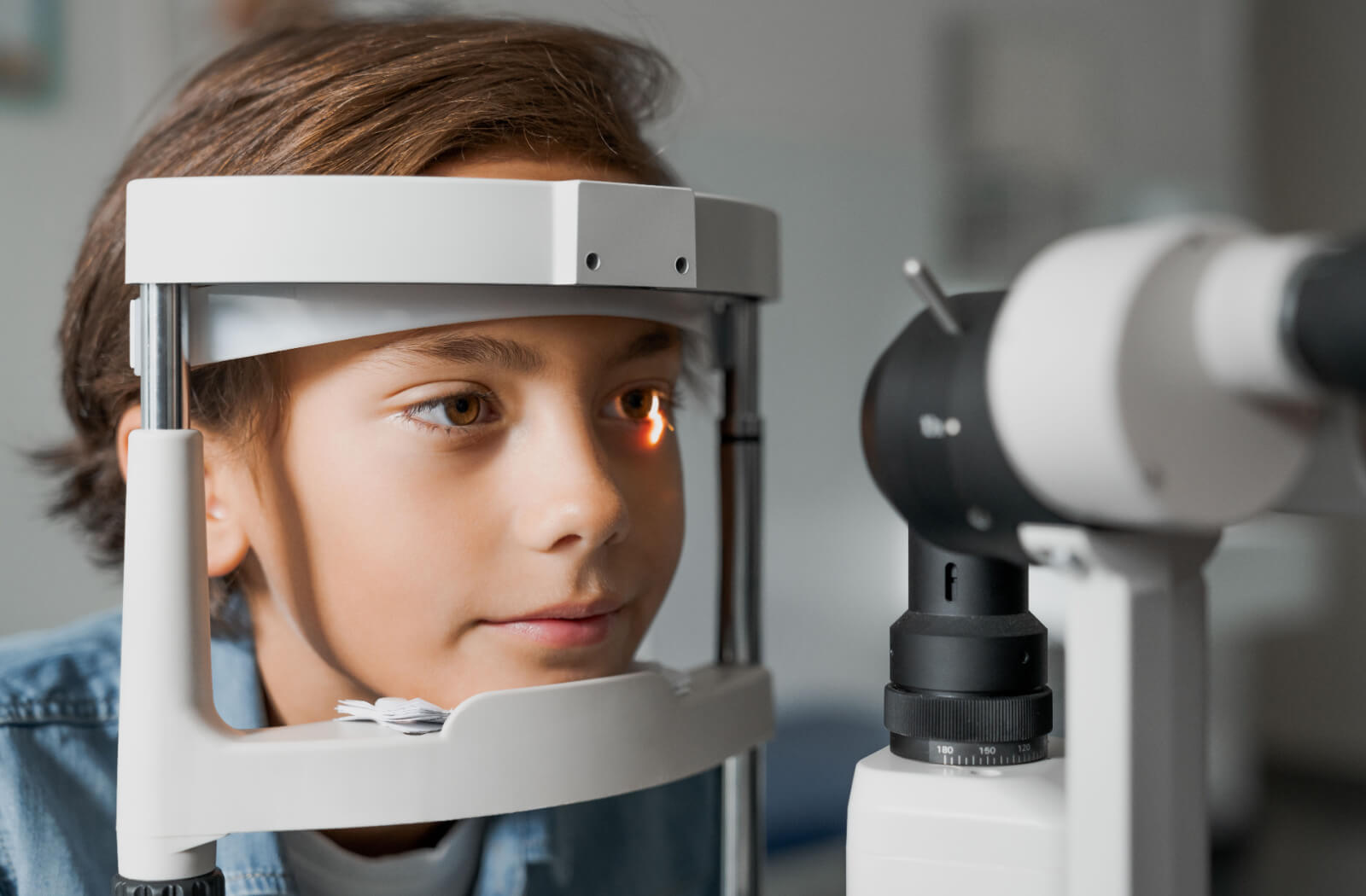
Consistency Is Key
Vision therapy is a process that requires commitment and consistency. Just like going to the gym for physical exercise, regular practice and repetition are vital to seeing improvement in vision. Sticking to a schedule and continuing with therapy, even if results are not immediately noticeable, is essential. Contact Bella Vision today to learn more about how our team can help your child reach their full potential through pediatric vision therapy. Our expert therapists are dedicated to providing personalized care and supporting you every step of the way. Remember, investing in your child’s visual health will benefit them for years. Don’t hesitate to take that first step towards a brighter future for your child. Book an appointment!


